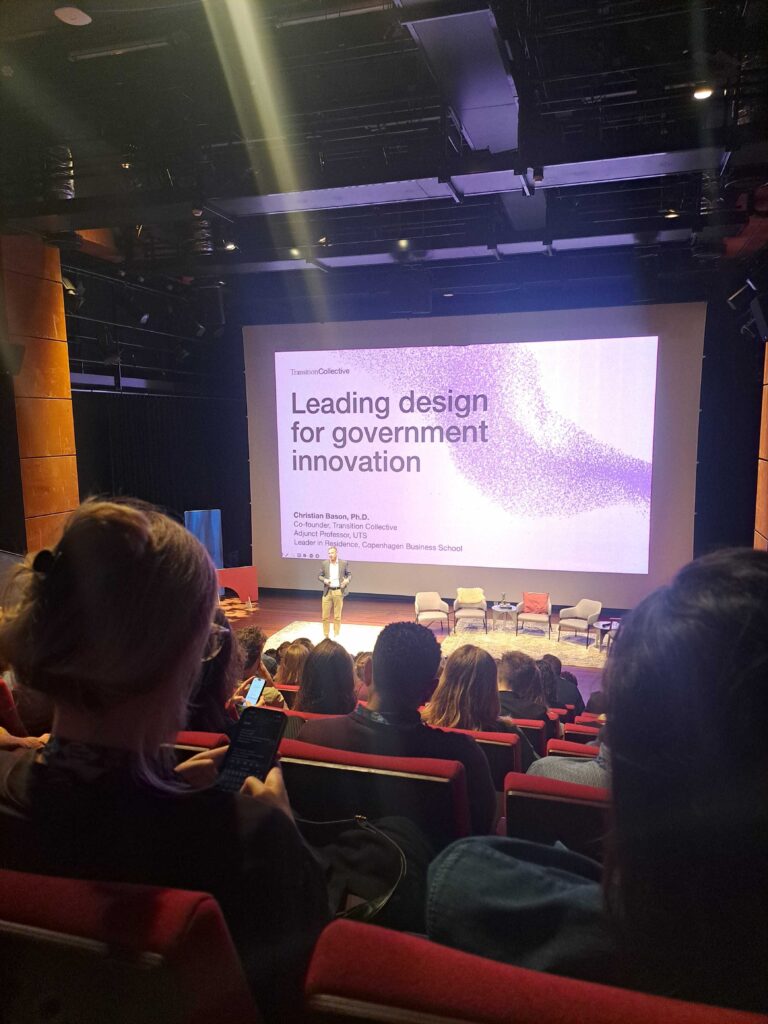
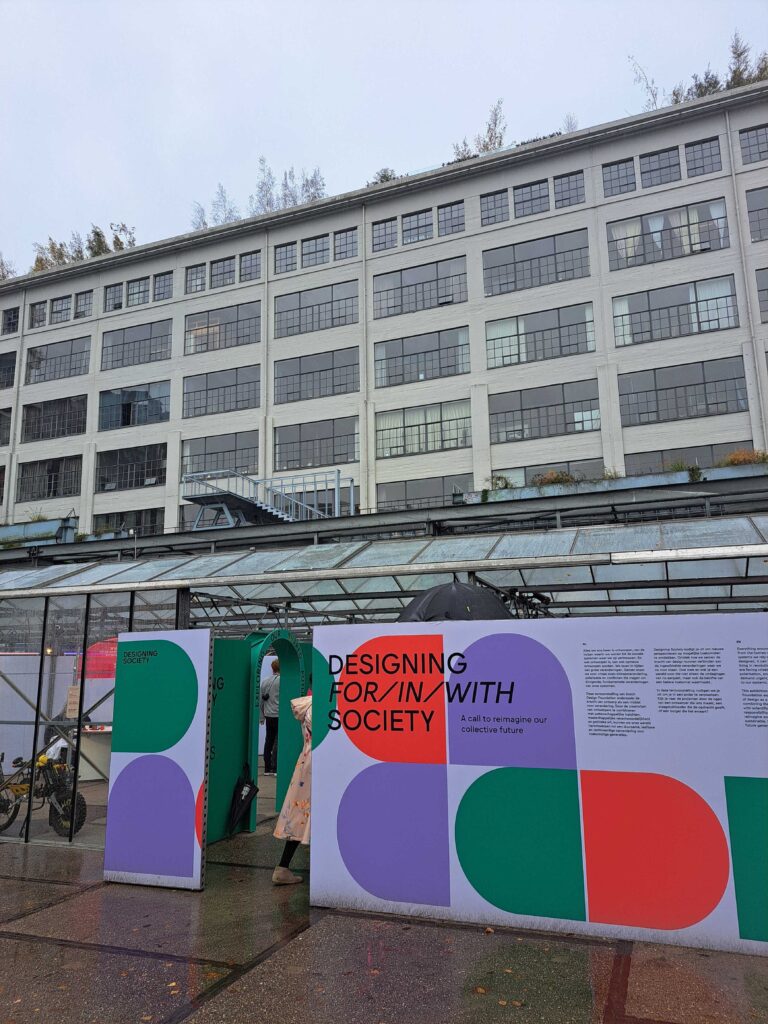
Better Governance by Design (Paulien)
A highlight for me was the inspiration day for civil servants and designers working towards meaningful change. The day centred around the belief that design-led approaches are essential for the public sector. Designers bring a learning-oriented approach—engaging deeply, involving diverse perspectives and developing new courses of action to enable meaningful, step-by-step change in collaboration with society.
Our skill of asking (new) questions can open doors to innovation and new solutions. To change things for the better within the current system, designers need to be able to ask these questions on different levels and scales. This means building space for creativity, also in the national government, where decisions are made that guide policy and the context in which policy is shaped.
Design practices deliver valuable results. We heard inspiring stories from different designers working with the government on social issues. It’s clear that Design Thinking is happening at lower levels within the government. The real challenge is to better integrate them and change their way of working; this requires rethinking government collaboration and systems. Strategic work needs to happen too.
Christian Bason (MindLab/Danish Design Center alumnus) shared his knowledge on public innovation and systemic transformation in government. He explained that in the public sector people work in a high-stress environment. That is not the ideal situation for creative thinking. His call for designers to help build creative, resilient workplaces and for civil servants to invest more time in deep behavioural change clearly shows where the gap lies. The key to bridging this gap is codified knowledge and shared learning. By ensuring easy access to documented resources and reflections, we can quickly empower public servants, giving them the necessary bandwidth to focus on experimentation, creativity, and interdisciplinary collaboration.
For me, this confirmed the importance of research, insights and knowledge infrastructure and a learning mindset to be able to reflect and learn in this essential shift. If we want people to be able to work outside of their own silos and comfort zones, they need to be able to rely on well-documented knowledge and learnings that bring them up to speed.
This event was organised by ‘De Publieke Ontwerppraktijk’ (PONT). PONT supports civil servants, administrators, and designers to collaborate effectively. In this way, we can proactively, justly, and flexibly respond to the challenges of today’s era. You can find more on the work of PONT via https://www.depubliekeontwerppraktijk.nl/
Equal Society Mission Day (Geke)
One of my highlights was the half-day conference organised by the Participation Knowledge Centre in collaboration with various ministries. It was remarkable and inspiring to hear how actively civil servants are already involved in reaching out and picking up ‘signals’ from society.
“We are increasingly focused on ‘signal management’. This goes beyond participation. It is not limited to organised consultation moments, but based on more proactive and exploratory research. This takes the form of candid and spontaneous observations and interactions in a particular neighbourhood. The focus is on picking up signals from the lives of people in society. This is increasingly expected of us as a government. Our team guides civil servants to go out and pick up signals.” (Janneke de Jong. Director of Participation, Ministry of Infrastructure and Water Management)
“We organise ‘signal collection days’. Signals can come from conversations, but also from the media, observations, or something else. After spotting an initial signal, we investigate it further and turn it into a story that we present to policymakers. It is important to ensure that there is sufficient scope for action. Sometimes we focus on a specific topic, but we also zoom out. What is the connection? Who can do something about this? We look for new connections and then take a creative approach to them.” (Meia Wippoo, Project Leader Broad Signalling, Ministry of Social Affairs and Employment)
A critical but constructive note came from the Foundation ‘Huh, what do you mean?’:
“In some neighbourhoods, residents are being over-asked. Sometimes they get the same questions over and over again. That is why we suggest that it would be better and more enjoyable to guide them in becoming researchers in their own neighbourhood. They are able to pick up on signals and pass them on. We support them by creating the conditions for this.” (Sjef Kuijsters, Director of the ‘Huh, wat bedoelt u?’ Foundation – which translates to: ‘Huh, what do you mean?’)
These are all strong examples of service design – Identifying an opportunity for positive change, creating the conditions for that change to happen, engaging and guiding the relevant stakeholders, communicating results to others to create more appetite, and keeping at it so the original pilots become an established routine.
For more information on the Participation Knowledge Centre (Kennisknoopunt Participatie), visit their website (in Dutch, but with an option to translate).
Signal management goes beyond participation, and is based on more proactive and exploratory research.
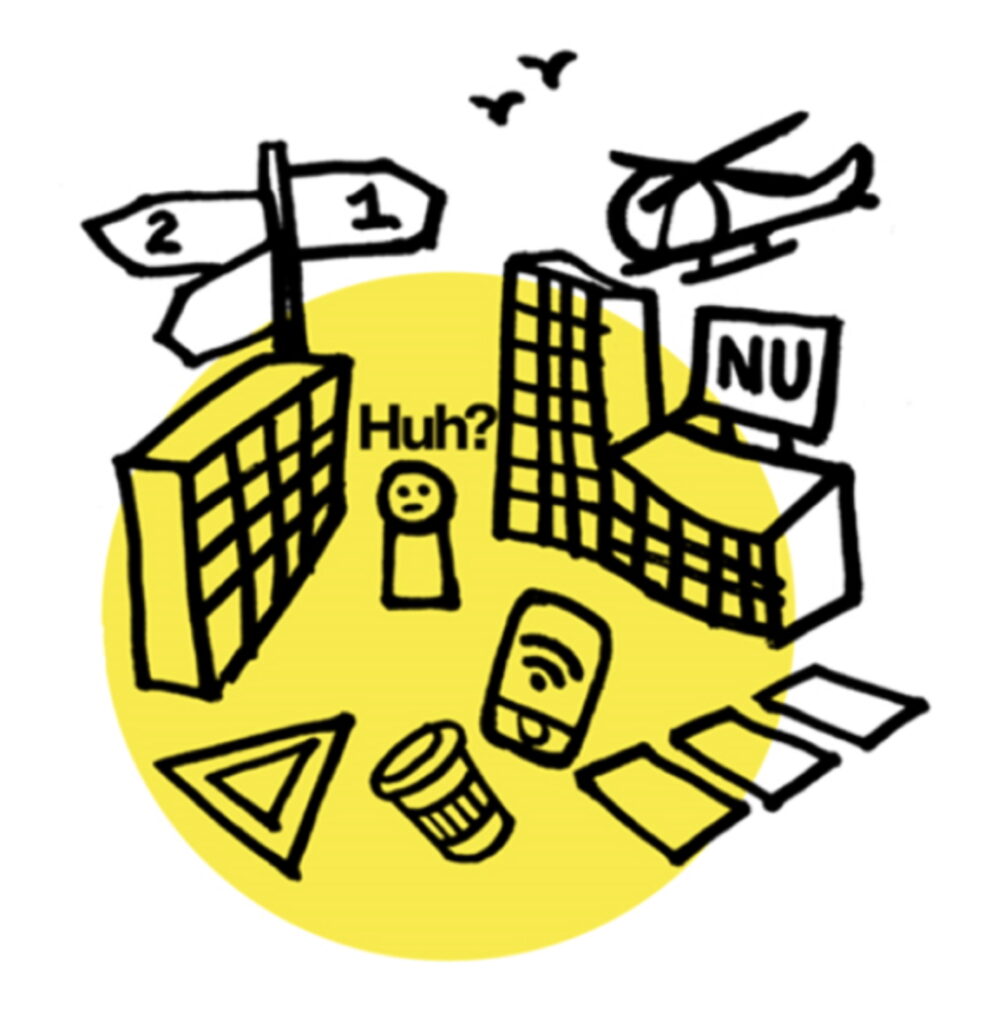
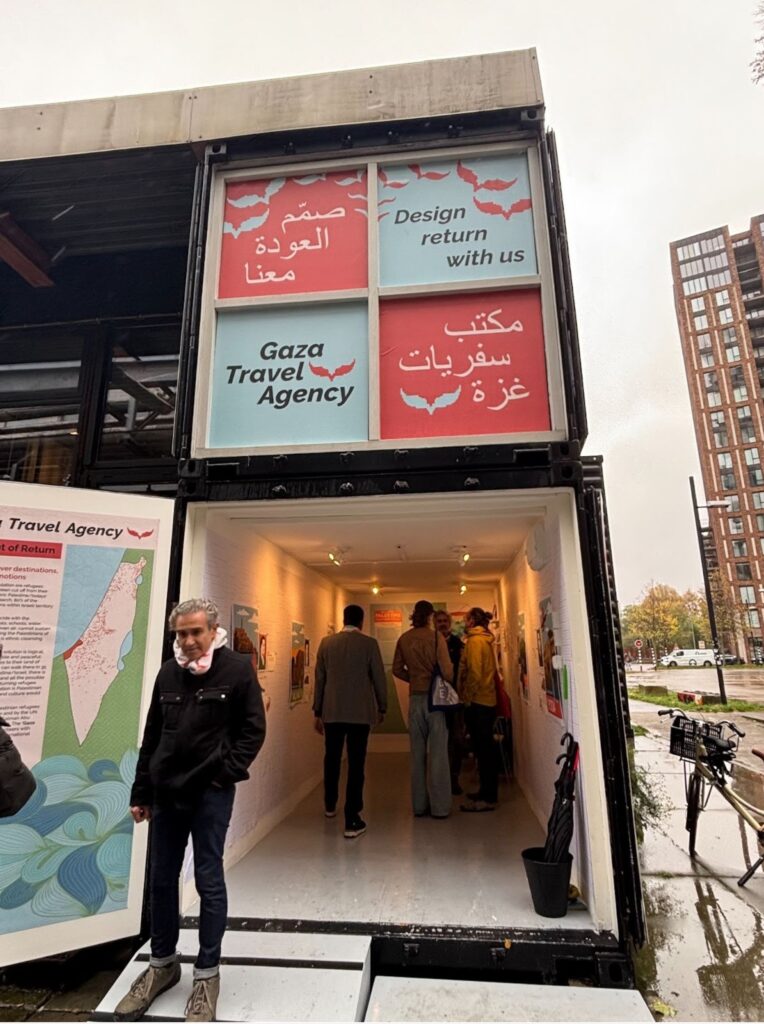
The Gaza Travel Agency installation (Sophie)
My absolute highlight was visiting and experiencing the Gaza Travel Agency hosted by Design Reparations.
The Gaza Travel Agency installation invites visitors to imagine the simple act of “taking a bus home” as a radical gesture of justice. It transforms the Right of Return, often framed as abstract or political, into a tangible and deeply human experience. Standing inside a speculative travel agency, complete with routes and destinations, Gaza Travel Agency reveals how design functions as a bridge between memory, displacement and the possible futures of repair.
It’s a powerful reminder of the potential of speculative design and its ability to imagine futures of justice that are deeply rooted in our histories. The routes presented by Gaza Travel Agency are based on real historical places that still exist, many of which are uninhabited but carry layers of memory, culture and identity. Here, design becomes a form of solidarity, offering us the opportunity to reimagine what reparations and restorative justice can look like.
In a time when displacement is often normalised, this work insists on the emotional, cultural and political necessity of return. It demonstrates that design plays a crucial role in making oppressed and erased narratives visible and in offering alternative ways of seeing, being and supporting, giving tangible glimpses into radically restorative futures.
You can learn more about Gaza Travel Agency and Design Reparations via their website.
Also explore historian Dr. Salman Abu Sitta’s work on the Practical Plan for the Return of the Refugees, which inspired this installation
Digital Futures, Reclaiming agency in our digital lives (Yesse)
The acceptance of big tech in every aspect of our lives, from our work to the media through which we interact with our fellow humans, has been a recent development. We have transitioned from a relatively open and free internet where everyone was free to create their own community spaces to one where spaces are controlled by corporations whose business models do not necessarily align with our well-being. The attention economy was one of the foundational acceptances of our time with the rise of the internet. But for many, this has not translated into accepting its consequences.
The idea of banning social media for users under 15 has gained traction in the last few years, but is this really the best approach? Speakers at the Design Innovation Session – Digital Futures, Reclaiming agency in our digital lives, expressed where the problem lies, and how designers and researchers can work to address it.
So, where is the problem? Wouter Nieuwenhuizen from the Rathenau Instituut states that design changes upstream at this level (starting at governance) directly flow down into changes affecting business models and, further, into user outcomes. But making changes at that level is not easy. Thijs Turèl expresses that the most difficult challenge is how to transform design solutions to policy, especially in the Netherlands, where we are mainly consumers instead of producers of tech services.
There is a problem with our digital lives, our lack of agency within it, our unconscious entrapment in addictive engagement, but that’s not what the internet needs to be; that’s not what it used to be. The internet, despite this, can act as a safe haven for the vulnerable, a source of information and diffusion of worldviews far beyond our own, and a place to find connections where they may otherwise be absent. These are the parts of the internet we need to strengthen and design for, and we can.
Something that all speakers agreed on was that designers have something unique to offer; designers can think creatively, offering solutions outside of the current digital dogma in order to address its problems. Designers can connect people, understanding and working with users, changemakers, and companies to propose solutions that address their needs. Dr Sindy Sumter and Marcel Schouwenaar added that designers and researchers need to work together, and, most importantly, that teens (as digital natives, one of the most affected groups in the current attention economy) need to be involved as research partners & codesigners.
If you want to understand more about the problem and what design for this digital future could look like, this paper from the Rathenau Instituut provides an excellent exploration into the topic.
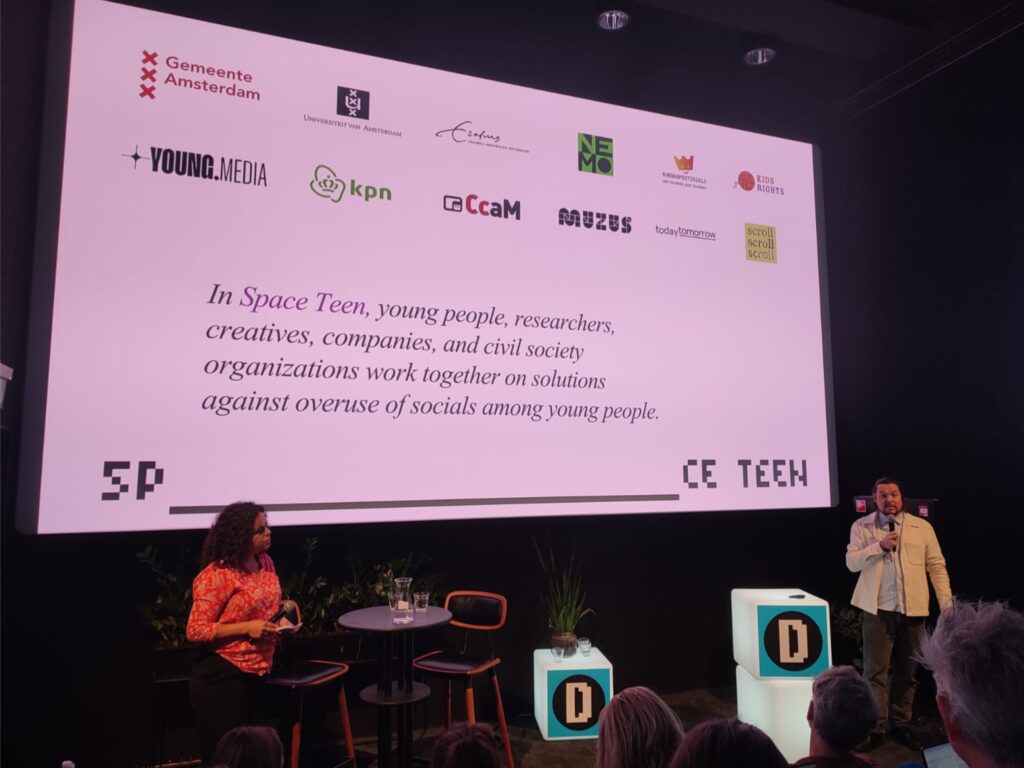
Design changes at governance level directly affect business models and user outcomes, but this is not easy. The most difficult challenge is how to transform design solutions to policy.